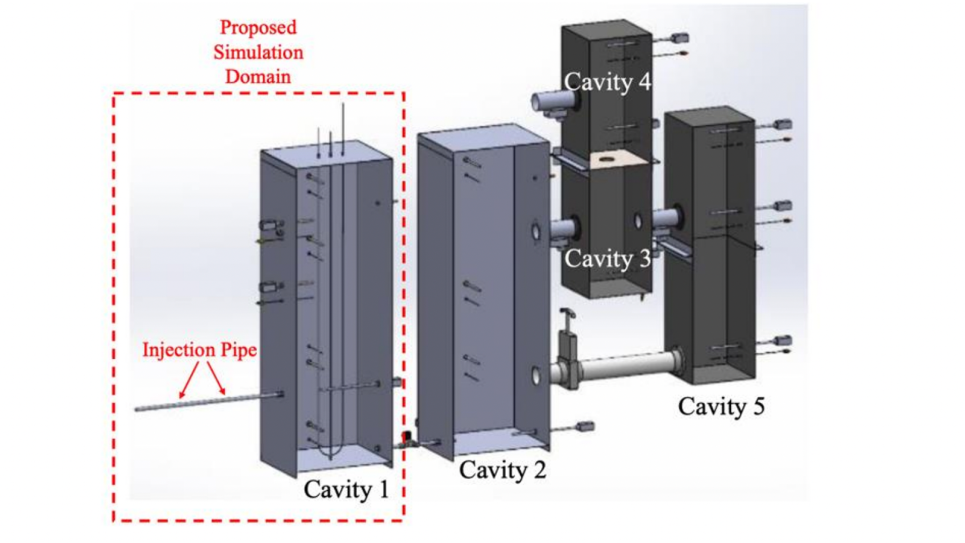
Drawing of the simulated HTGR cavity system at CCNY’s Reactor Cavity Test Facility [9]. The system is composed of five interconnected cavities. This proposal will focus on simulating the helium-air mixing phenomena in Cavity 1 only.
Results from this work will be included in a V&V database for future validation of HTGR simulation codes and could be used to improve the sub-grid scale models in low-order codes.
Advanced reactors such as High Temperature Gas Reactors (HTGR) and Sodium Fast Reactors (SFR), are being developed by US companies for deployment in the late 2020s or early 2030s. One of the critical passive safety design tests for High Temperature Gas Reactors (HTGR) is the ability to dissipate decay heat safely during Depressurized Conduction Cooling (DCC) conditions. Following a break in the primary system of a HTGR, hot helium gas will be discharged from a high-pressure primary loop into the reactor cavities surrounding a Reactor Pressure Vessel (RPV) or steam generator. Hot helium jets will mix with the cold air in the cavity and this gas mixture may be vented through different vent paths. As helium continues to escape from the primary system, the primary loop pressure falls eventually to an equilibrium pressure. The cavity may then be filled with a wellmixed air-helium, stratified layers of air and helium, or only helium or air depending on the cavity vent paths.
After the primary system pressure falls to an equilibrium pressure in the cavities, a helium-air mixture may enter the primary system through the break and potentially leading to catastrophic results. The amount of air entering the reactor is significantly governed by helium-air mixing and possible helium-air stratification inside the reactor cavity. It is necessary to check the design test by modeling the gas-mixing phenomena computationally using system level or detailed 3D CFD codes, and by conducting experiments using scaled models to validate the computational results. NekRS will be used to conduct high-fidelity (DNS and LES) simulations of the gas mixing and stratification process. Results from the simulations will be compared to experimental measurements. It is expected that the mixing of gases and high-speed jet could introduce a substantial degree of compressibility effect in the simulations. This team will investigate the validity of low-Mach number assumption and the performance of NekRS as the speed of jet gradually is ramped up. Results from this work will be included in a V&V database for future validation of HTGR simulation codes and could be used to improve the sub-grid scale models in low-order codes.